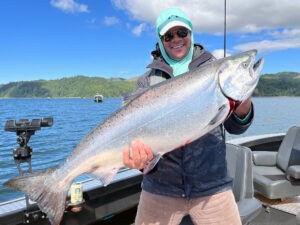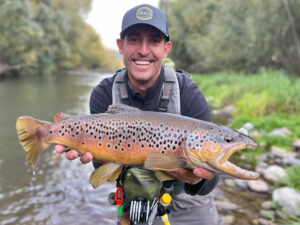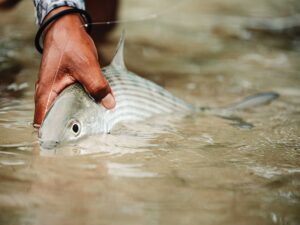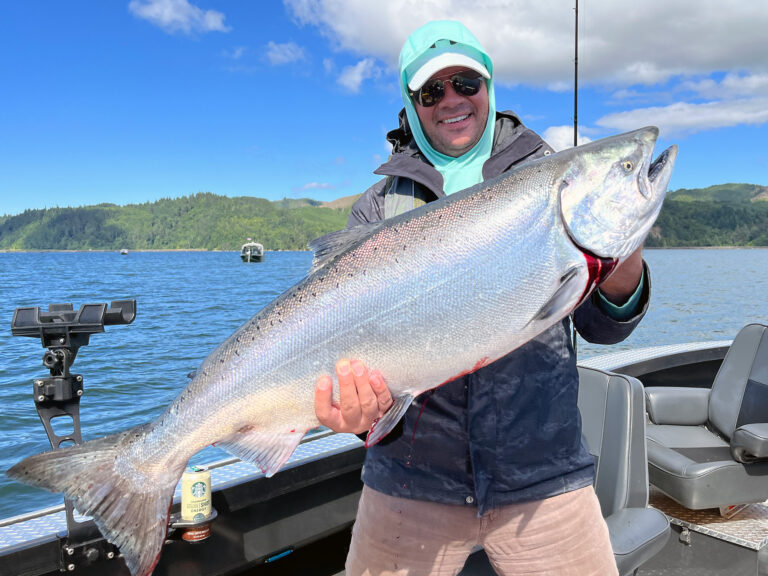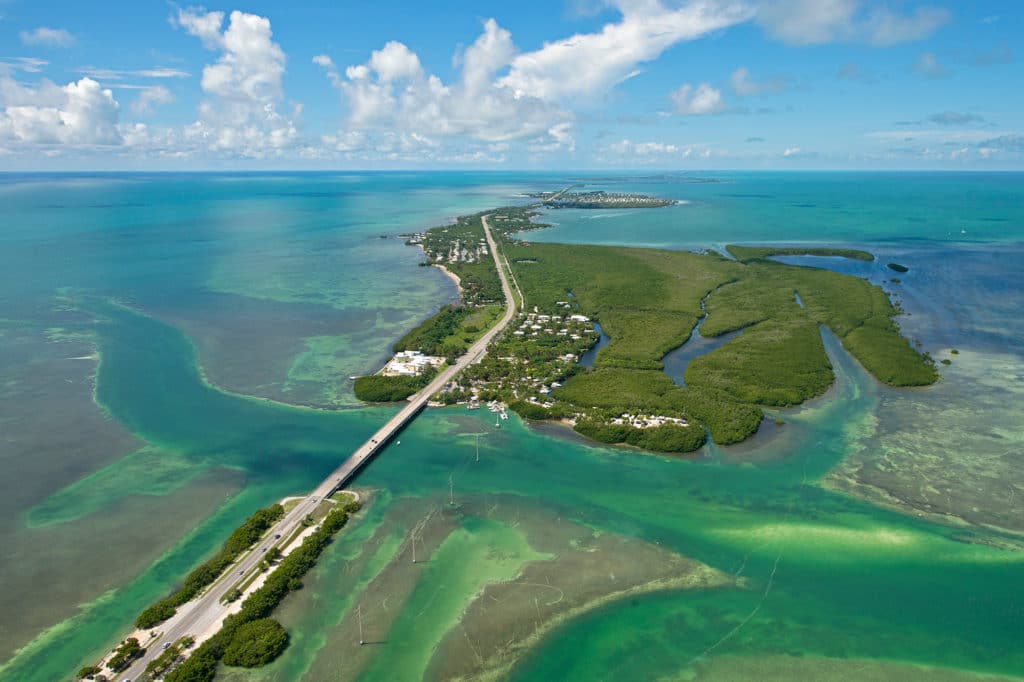
The Florida Keys
Driving south down U.S. 1 in Florida, it’s easy to become hypnotized by the green and blue waters surrounding top fishing destinations such as Key Largo, Islamorada, Marathon and Key West. There are plenty of stretches along the main drive that allow car travelers to watch boaters catch tarpon or snapper. How distracting!
The Florida Keys is a coral archipelago stretching far into the Gulf of Mexico and Atlantic Ocean, providing numerous launch points to some of the most diverse and productive salt waters in North America. The coral shores lead to pristine flats and coral reefs, with the reef edges acting as the final step out to deep bluewater. Anglers in flats skiffs and bay boats explore the extensive grass-and-sand flats, deep channels and bridge structures. Light-tackle boats make hay along the wrecks and reefs. Offshore center-consoles and sport-fishers roam the open waters in search of pelagics. The Keys remain a saltwater angler’s paradise. With so many target species available, timing is critical. Sure, some species are available year-round, but that’s not always the case. This calendar guide, formulated from interviews with respected Keys captains, highlights top Florida Keys fishing seasons broken down month by month.
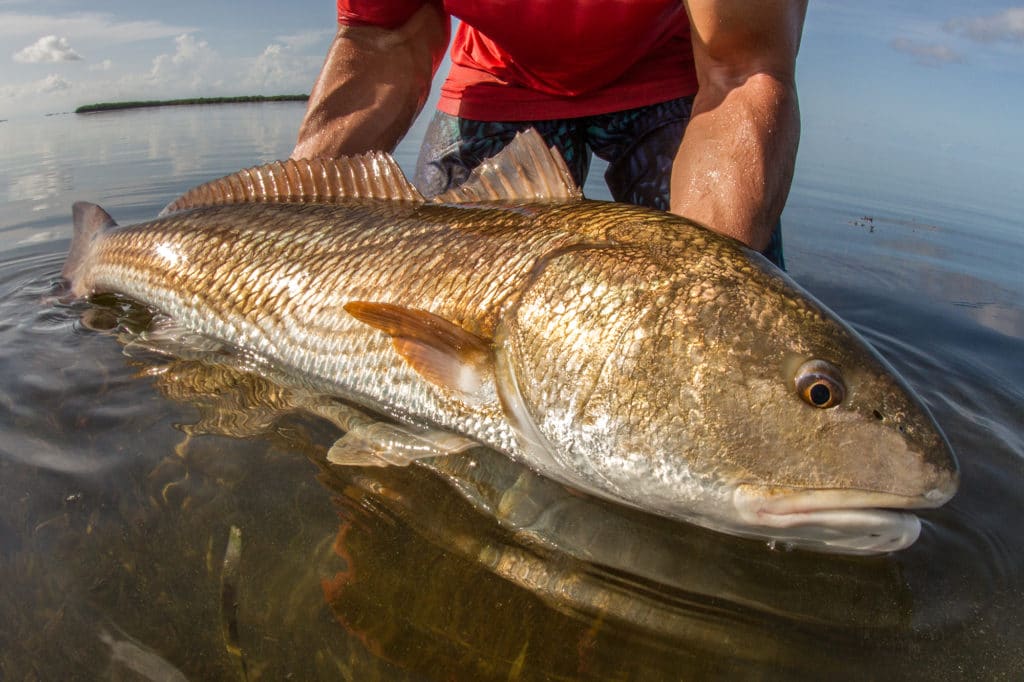
Redfish
January, Capt. Rick Stanczyk, Islamorada
Keys redfish cooperate all year long, allowing captains such as Islamorada’s Rick Stanczyk to take advantage during the cool months. There’s really no optimal Florida Keys redfish fishing season in the northern portion of the Keys. Stanczyk runs a 22-foot SeaCraft bay boat and shies away from super-shallow fishing for reds, so his top months are the cooler ones, from December to February. He favors the creeks near the Northwest Cape on Florida’s mainland, casting medium-light Shimano spinning outfits spooled with 20-pound braid, 30-pound leader and natural baits.
“During these months, redfish tend to push out of the very shallow flats into the channel runoffs, island moats and creeks of the mainland Everglades,” he says. “The areas may be anywhere from 2 to 10 feet deep. In many instances, we catch them over hard, rocky bottom.”
During a cold front with a hard north wind, reds school up heavily in areas like these channels. On a high, rising tide, redfish move out of the holes and find similar structure along the shorelines.
“My favorite technique is probably pitching live shrimp or pilchards around the shorelines, islands, and in the creeks of the mainland,” Stanczyk says. “You have a shot at catching redfish, snook or even little tarpon while doing this. You can also chum areas that look productive and attract fish away from structure.”
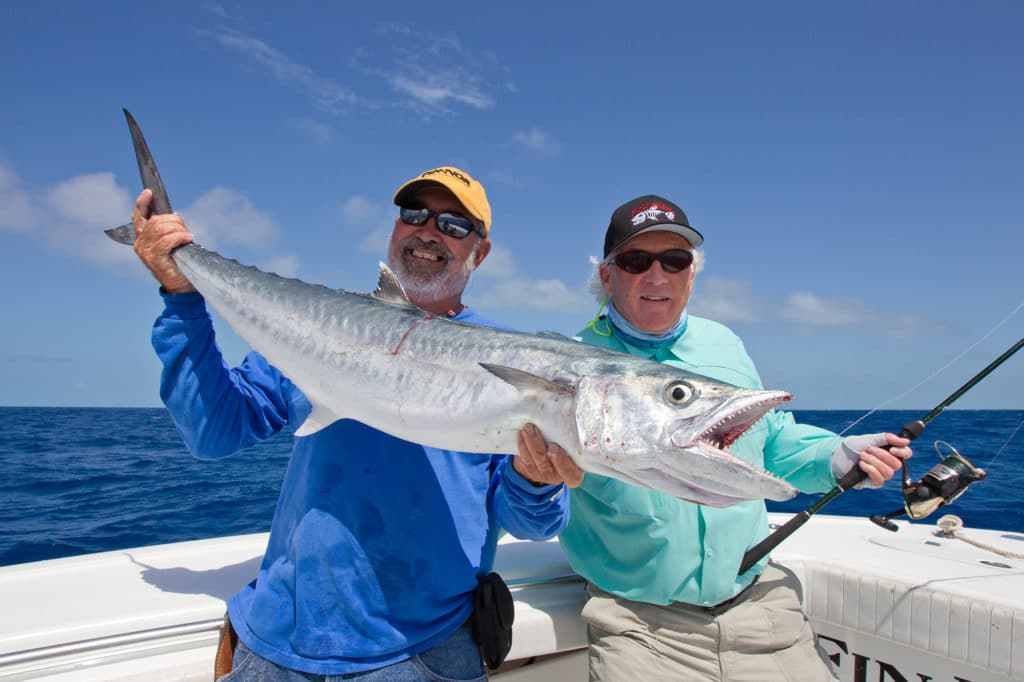
Kingfish
February, Capt. Tony Murphy, Key West
Capt. Tony Murphy heads to the Gulf of Mexico’s green waters late in the year to target 30-plus-pound king mackerel. From December to February, look for water temperatures from 72 to 76 degrees along reef edges to find kingfish. It’s one of the best fishing spots in the Keys when the water temperatures are cool.
“The break in 45 to 52 feet of Gulf water is great in February,” he says. “In the Atlantic, we fish the inside reef edge from 75 to 120 feet. A west tide is optimal, especially with the predominantly east wind.”
Murphy’s favorite tactic is chumming the kings into a feeding frenzy with live pilchards, then casting a fly rod for the mackerel. But on a normal charter, he uses Shimano Terez rods and Saragosa spinners loaded with 50-pound braid.
“For a leader, I’ll use two rodlengths of 30-pound fluorocarbon connected to 12 inches of No. 5 wire with an Albright knot,” Murphy adds. “The hook size will depend on the type and size of live bait.”
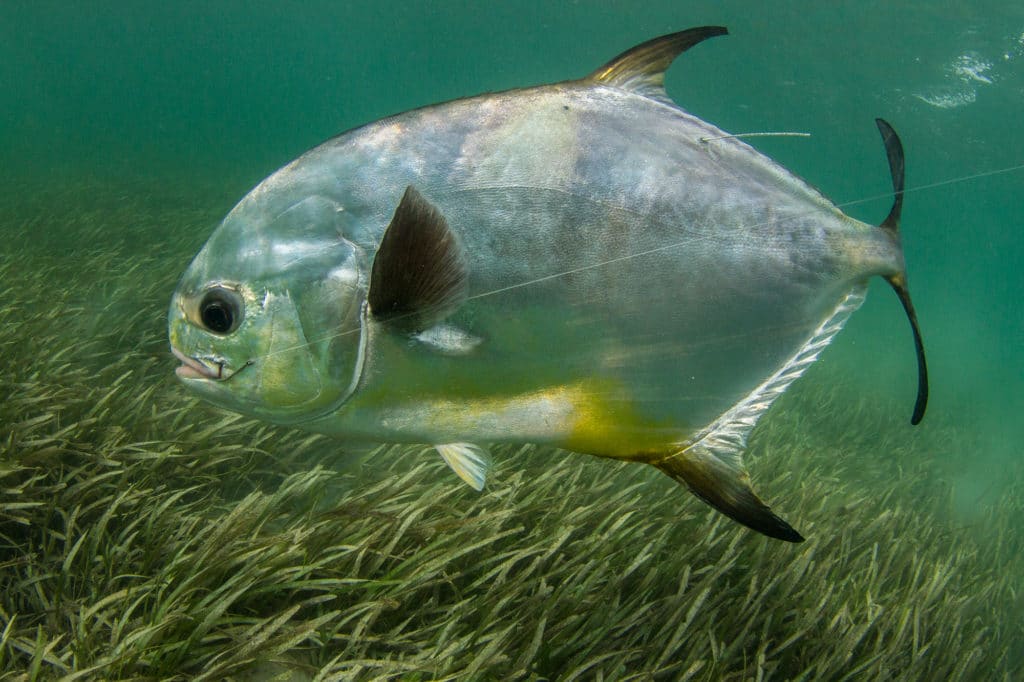
Permit
March, Capt. Lenny Leonard, Key West
Before permit head to deeper waters in April to spawn, Capt. Lenny Leonard targets them on the shallow flats of the Lower Keys. From the Gulf’s Content Keys west to the Marquesas, permit fishing is available most months of the year, with February and March attracting the largest fish to the flats. Look for flats with hard bottom and plenty of current, those are the best fishing spots to target — chances are permit will be feeding or staging nearby. When fishing the flats, watch for the flash of the fish’s sides reflecting direct sunlight.
“I believe those fish are pre-feeding at this time,” says Leonard. “They head shallow to eat and warm up their bellies — almost an incubation period for the eggs.”
Leonard sight-fishes shallow flats in less than 3 feet of water, preferring fly tackle, though he guides both fly and spin anglers regularly.
“Using a live crab seems to work best, but permit will definitely eat a live shrimp presented properly on a diamond bucktail jig,” he says. On fly, Leonard prefers an 8- to 10-weight setup with a floating line. “Since most of the crab-imitator fly patterns have dumbbell eyes, there’s no need to use a sinking fly line if the fly sinks,” he says.
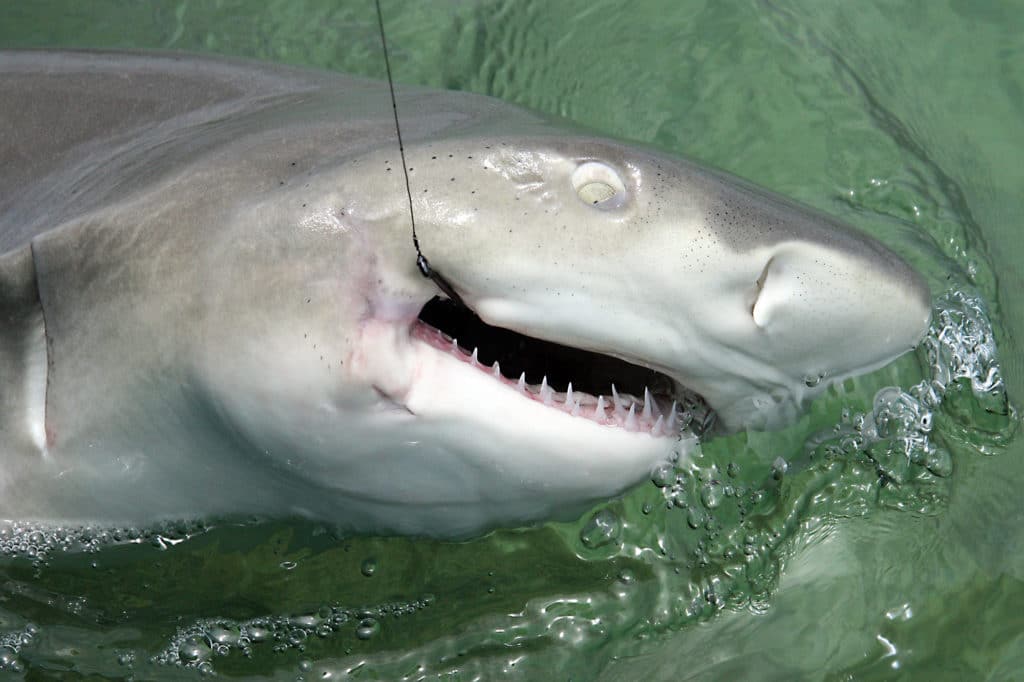
Sharks
April, Capt. Nate Wheeler, Summerland Key
With blacktip, spinner, bull and hammerhead sharks readily available from February to April, guides such as Capt. Nate Wheeler target the different shark species in the Florida Keys for their sporting qualities. When casting a live crab for permit, don’t be surprised if an oversized bonnethead shark finds it first — the mini hammerheads go nuts for sand-dollar-size crustaceans.
“Fun blacktips and spinners trail schools of baitfish such as mullet and ladyfish that invade the Keys in the winter months,” says Wheeler. “As soon as the tarpon start pushing through in March and April, many ‘capital’ sharks like bulls and hammerheads follow them in.”
The large channels running between Keys flats and islands, measuring anywhere from 5 to 25 feet deep, provide plenty of food and good habitat for sharks. “I really prefer to fish for sharks on the edges of channel flats in shallow water, so you can watch them track and eat your bait,” says Wheeler.
When fishing in the Florida Keys, you will encounter sharks, so be ready for them with the proper tackle. Wheeler prefers to use light-tackle spinning gear, 25 pounds or less, for maximum sport when fishing the flats near Big Pine and Sugarloaf keys. Much larger conventional tackle is necessary for the bigger sharks, he says.
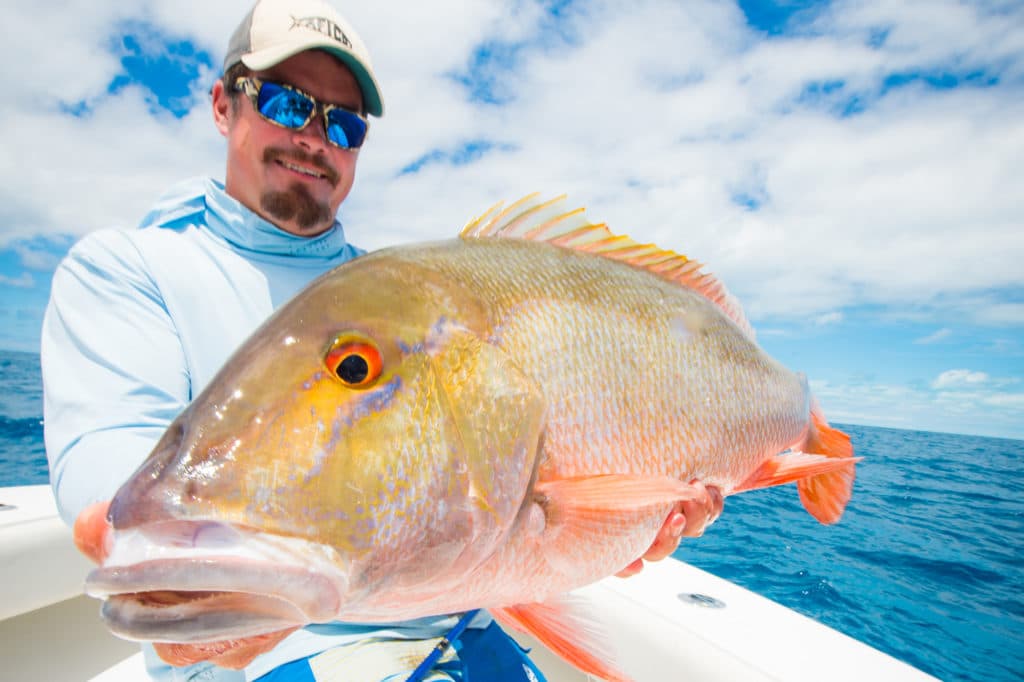
Mutton Snapper
May, Capt. Mike Weinhofer, Key West
From December to June, delicious and hard-fighting bottom species like red grouper and mutton snapper are available to anglers fishing in the Keys. (Be mindful of the fishing open seasons, they change from year to year.) The full-moon spawn in May attracts masses of muttons, followed in June by their movement into shallow water. In the Gulf, a falling tide is best, says Capt. Mike Weinhofer, of Compass Rose Charters. Productive structures are the ledges or small rock outcroppings over flat-bottom areas. Key West has the Bar, which is 45 feet deep on top, but drops to 110 feet over just 50 yards.
“My favorite place to catch muttons is down to the west [near the Dry Tortugas], in less than 20 feet of water, using live ballyhoo on spinning rods with some backbone,” he says. “I use Fin-Nor spinners with 30-pound Sufix 832 braid, tipped with 30- to 40-pound fluorocarbon leader tied to a small white bucktail.
“The mutton and grouper fishing tend to get better the farther west you go,” says Weinhofer, who adds that one fishery few anglers know about is the many true American red snapper off Key West. “The numbers of red snapper are staggering — a totally underutilized fishery that’s catch-and-release for all but a few days a year,” he says. “I love fishing around the Dry Tortugas for bottom species. It’s an untouched wonderland.”
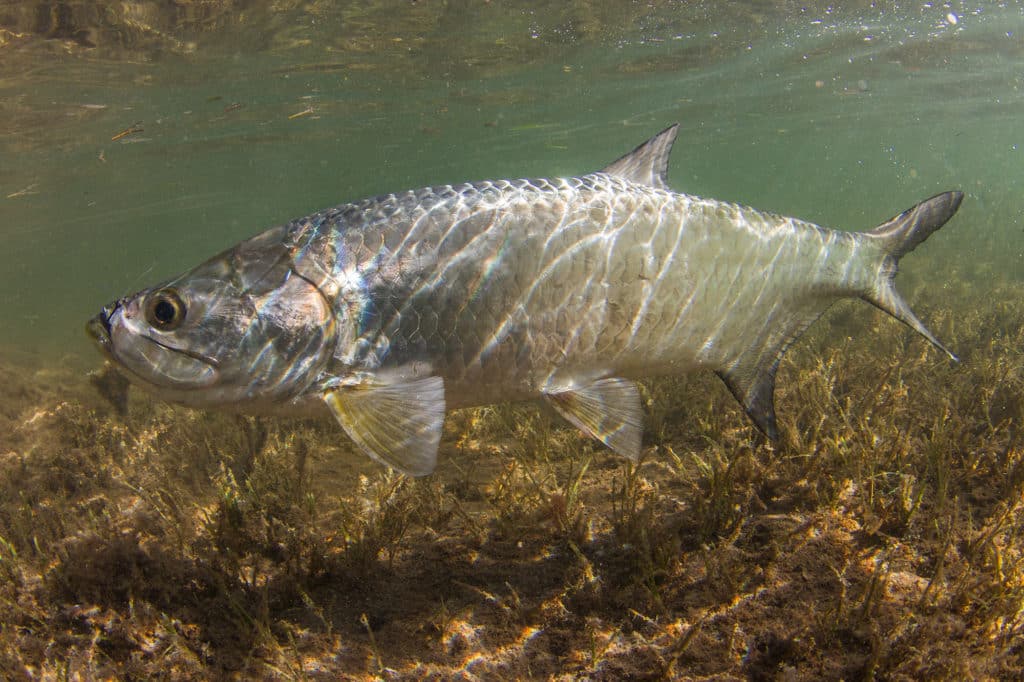
Tarpon
June, Capt. Travis Holeman, Key West
Key West is one of the few locales in the world that attract tarpon all year long. “I like to joke that they’re here in between cold fronts, so late February and early March can be iffy,” says Capt. Travis Holeman, of Key West Angling. “The top three months are definitely April, May and June.” The peak migration happens with big pushes starting at 79-degree water temps.
Tarpon are likely one of the most iconic fish species in the Florida Keys. Channels are just highways for tarpon. “A new moon [can be] a Super Bowl for our tarpon fishing,” he says. “Tarpon can be found in channels, flats, and on the beach, all moving somewhere.”
Holeman sight-casts Hogy HDUV baits paired with Barbarian jig heads. He uses a Shimano TranX with 80-pound braid and a 6-foot-6-inch Trevala jigging rod. He mostly fishes out of Hurricane Hole Marina in Key West, but travels to different Keys launch points if the fish are on the move.
“Once you figure out what the tarpon want for a retrieve, the bite rates are insane,” he says. “To me, it’s all about the near-surface feed. I want big explosions and smiles all around. This method is active, with plenty of casting.”
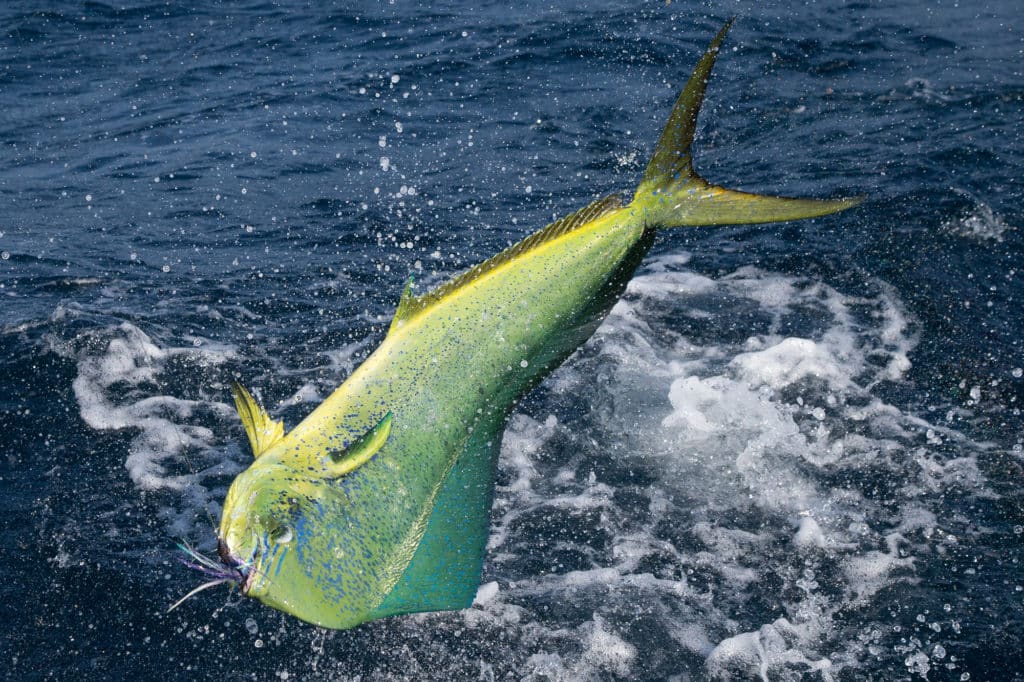
Dolphin
July, Capt. Brian Cone, Islamorada
Dolphin fishing is all about the birds during the summer months. “The large numbers of birds around during that time of the year really help us find feeding dolphin,” says Capt. Brian Cone, of Contagious Charters in Islamorada. He uses 12- to 20-pound spinning gear, depending on the size of dolphin he encounters.
The Gulf Stream delivers large amounts of baitfish to the area in May, June and July, attracting predators such as dolphin, tuna, wahoo and sailfish. “The current runs over broken bottom and humps to form reliable rips off Islamorada,” he says. “The agitated water is a prime area for dolphin to feed.” The Islamorada humps reliably have fish during all the different Florida Keys fishing seasons, so a trip offshore is always worthwhile if the weather cooperates.
Cone heads out to the rips, always on the lookout for surface-feeding mahi. Spotting the birds is a dead giveaway, often signaling bait schools and game fish nearby. “Dolphin are always in a feeding mode, and I love the challenge of hunting them down,” he says.
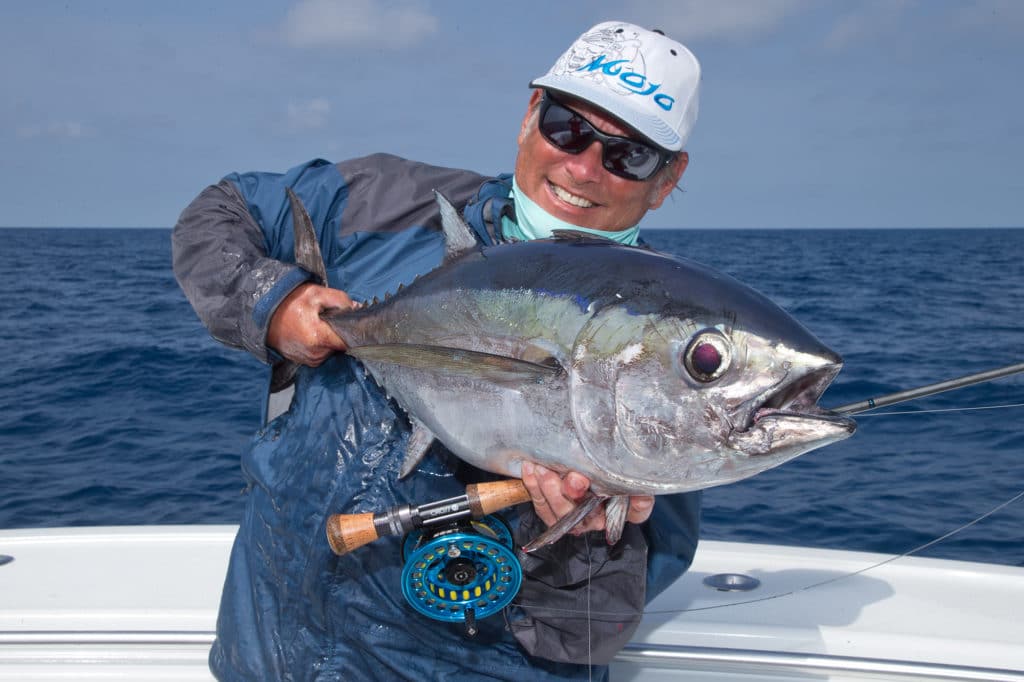
Blackfin Tuna
August, Capt. James Chappell, Islamorada
The fall fishing season offshore of the Middle and Upper Keys offer exceptional blackfin tuna fishing, says Capt. James Chappell, of Catchalottafish Charters. “From August to the first half of November, fish are consistent and solid-size 10-plus-pounders,” he says. “We get a push in the spring, but it’s unreliable with all the sharks.”
The best structures offshore are the massive humps that protrude from the ocean floor. “Marathon Hump, 409 Hump and Islamorada Hump are the best,” says Chappell. “I live-chum blackfin with pilchards. I like any sort of visual fishing, and chumming also allows for different techniques such as catching tuna on a fly rod.”
When live-chumming, Chappell uses 20- to 30-pound spinning tackle connected to 15 feet of 25-pound fluorocarbon leader, terminating with a 2/0 Mustad or Owner Mutu circle hook. In the winter, blackfin move in toward the reef to feed on the baits that move with the fronts, says Chappell. “It’s a blast to get covered up on the kites by 20-plus-pounders!”
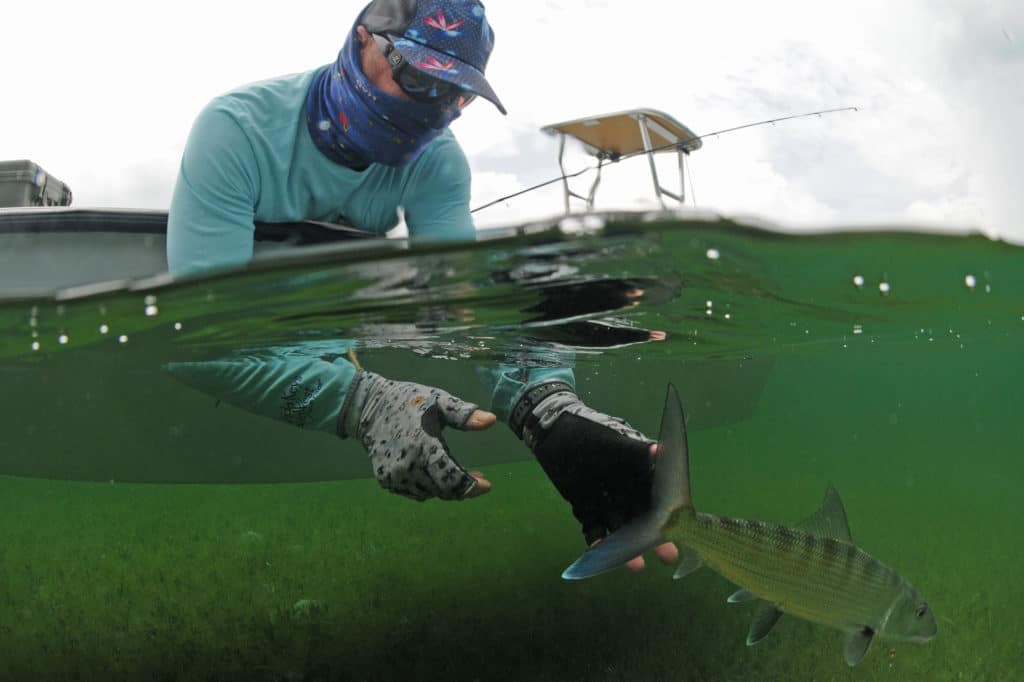
Bonefish
September, Capt. Ted Benbow, Islamorada
For the best opportunity to catch numerous bonefish on Islamorada’s flats, Capt. Ted Benbow and his son, Capt. Donnie, fish the top of the incoming tide and the start of the falling tide. Islamorada, no doubt, is one of the best fishing spots in the Keys because of the variety of fish species it offers. Benbow prefers spinning gear rigged with 10-pound braid, or 10-weight fly rods paired with small crab patterns.
“Bonefishing is all about the food source and moving water,” says Benbow. “It’s great to see bones tailing in super-shallow water. But in two feet of water, when they’re schooling and producing mud poofs, you know they’re in a feeding mood.”
Fooling a single bonefish into striking is much harder than casting to a school of bonefish competing with one another. Still, the Benbows love spending their days sight-casting a fly to spooky bonefish.
“We frequently practice throwing the fly rod with the left and right hand,” says Benbow. “This way, there is no need to backcast; we just switch hands when needed. We make it into a game, trying to catch one with each hand on the same trip.”
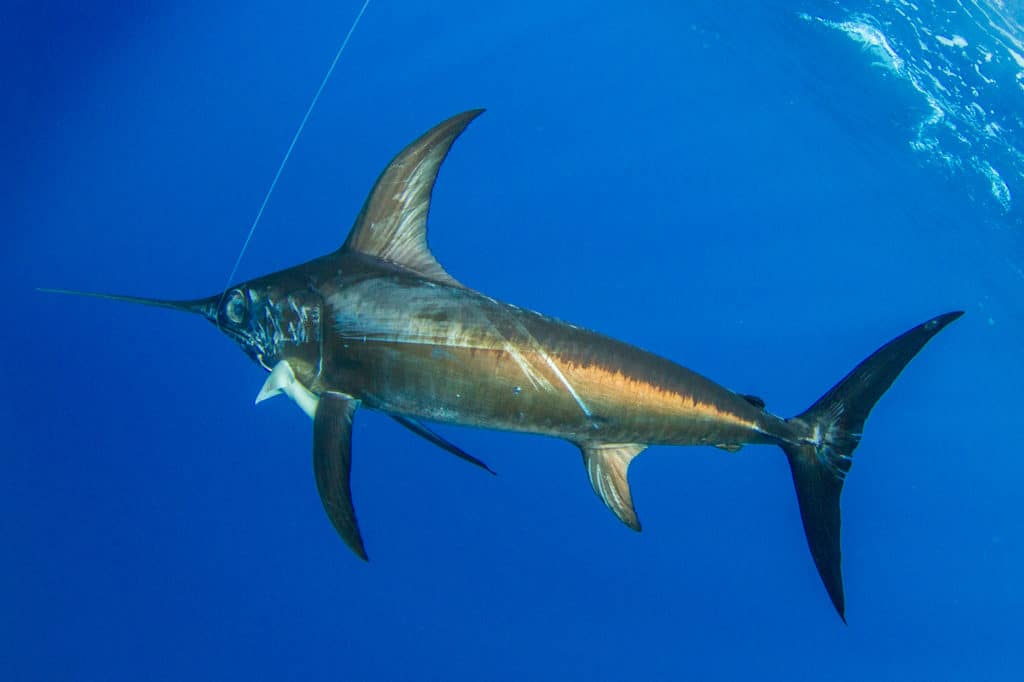
Swordfish
October, Capt. Nick Stanczyk, Islamorada
The continental shelf is a highway for swordfish off the coast of Islamorada, says Capt. Nick Stanczyk. Every month of the year, broadbill swordfish are available to target in waters from 1,400 to 1,900 feet.
“I prefer to fish during the day when the weather’s nice, especially in May, October and November,” he says. “I believe that’s when a lot of fish migrate through. Any sort of bottom structure like hills, holes, mounds and walls that hold bait can be productive.”
The Gulf Stream averages 2 to 3 knots off Islamorada, manageable even when fishing deep. Stanczyk prefers Shimano Tiagras, Tyrnos and Talicas with 65- to 80-pound braided main line and 200-pound mono wind-on leader. He pairs his Shimanos with custom swordfish rods from Key Largo Rods. For anglers who don’t want to hand-crank, he uses electric-assist reels such as the Shimano Beastmaster 9000 with 65-pound braid.
“When the rod tip bounces, you don’t know if it’s a 40- or 400-pounder,” says Stanczyk. “It’s a guessing game until you see the fish. You never know when you’re going to hook a giant.”
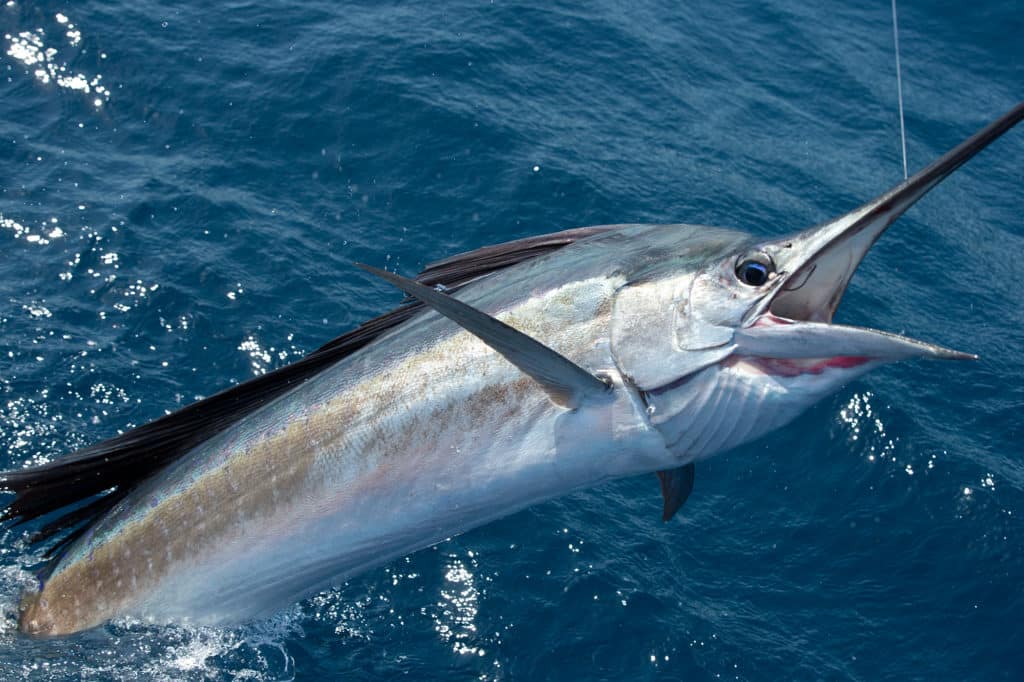
Sailfish
November, Capt. Ross Early, Islamorada
The waters off Tavernier and Indian keys are prime sailfish grounds for Capt. Ross Early of Islamorada.
“I’m looking for royal-blue water color,” he says, “or any kind of color change to indicate a current rip, where two different bodies of water come together. This is where the sailfish like to hang out.”
Early’s most productive months are November, December and January because of the good numbers of ballyhoo on the reef. He prefers the 120-foot depths coupled with a hard northeast current. For tackle, Early uses Daiwa BG60 spooled with 15-pound main line, doubled up with a Bimini twist to 30-pound fluorocarbon leader and a 4/0 Mustad live-bait hook.
“My personal favorite technique is to sight-fish for sailfish in the shallows, less than 30 feet of water,” Early says. “On sunny days, you can find the sailfish when you’re riding high in the tower. After spotting them, fire up the bite by chumming live pilchards first, then sending out a hooked bait.”
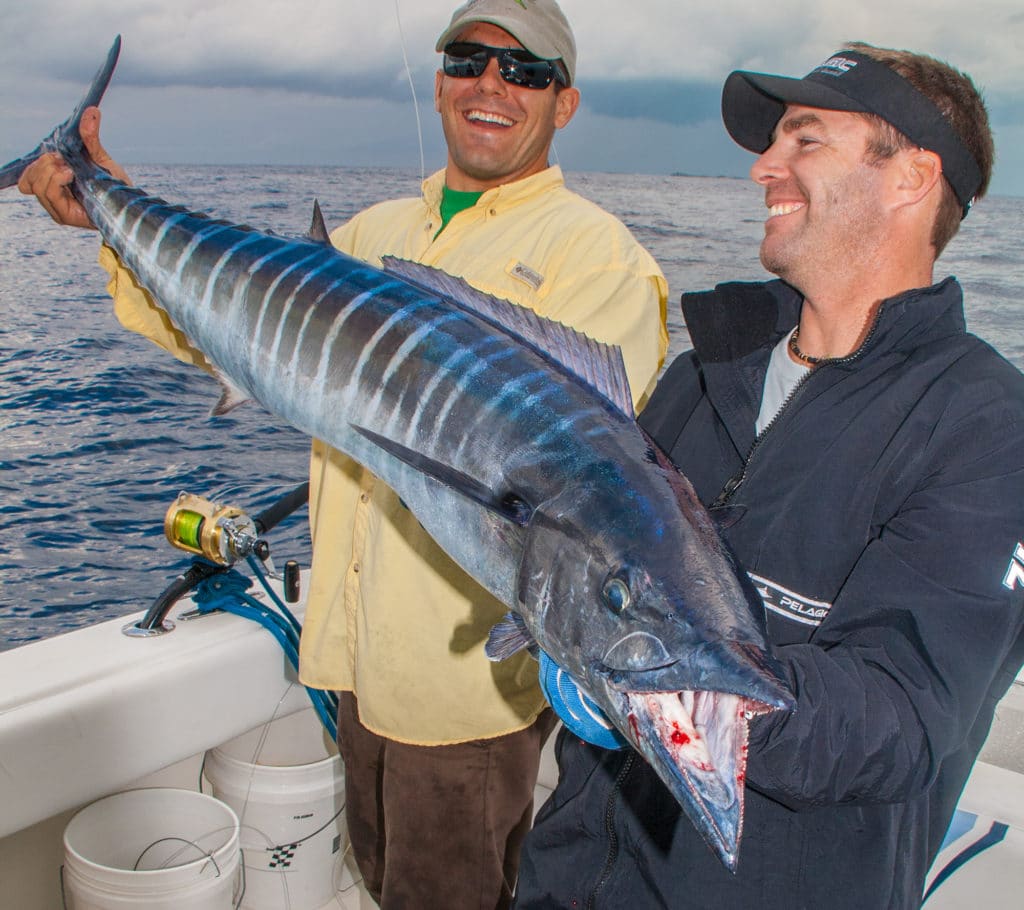
Wahoo
December, Capt. R.T. Trosset, Key West
Fishing the edge of the Bar off Key West, on the outside reef, Capt. R.T. Trosset targets wahoo with live speedos, bullet bonito or blue runners. Anywhere there is an irregularity in the reef, such as a high or low spot, it’s liable to attract wahoo. The best fishing conditions are during an east current or when the Gulf Stream edge moves in close to the reef, he says.
“The top fishing times are five days before the full moon and five days after in December and January,” says Trosset. “Also, mid-June to July can be hot, especially under flotsam in 200 to 2,000 feet.”
Once you hook one, keep fishing hard: Wahoo often school together, and you catch more. “I like fishing with live baits for the spectacular, skyrocketing bites,” he says. “I’ve caught more than 20 in a day, averaging 25 to 60 pounds.”
Around flotsam, Trosset trolls deep-diving purple-and-black bombers, or he’ll jig metal or bucktails 200 to 300 feet below the object. For live-baiting, chunking or jigging, Trosset prefers to use Fin-Nor 6500 spinners with 30-pound braid. For conventional setups, he opts for a Fin-Nor Marquesa 30 on a Tidal rod with 50-pound braid.


